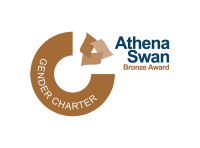

Taking as its starting point the radically new perspective offered by recent archaeological discoveries at Rendlesham in SE Suffolk, and with the East Anglian kingdom as the primary case study, this interdisciplinary project (running 2017-2020) aims to establish a new understanding of pathways to territorial lordship and regional kingship in early post-Roman eastern England through analysis of the development and role of central-places in society, economy, politics and ideology, and the networks of which they were a part.
The 'long eighth century' (c CE 680-820) is usually seen as the first major threshold of complexity in long-term transformations of social relations, production and exchange in post-Roman England. The recently identified elite centre at Rendlesham, however, suggests that this view seriously underestimates social and economic complexity in the 5th-7th centuries. Unique in early England in its size, wealth and complexity, and best paralleled by central places in contemporary Scandinavia, Rendlesham has major implications for our understanding of the character and origins of the early Anglo-Saxon kingdoms, and so for processes of state-formation around the North Sea.
The project will integrate the evidence of archaeology, place-names, landscape history, numismatics and materials science to characterise the central place at Rendlesham and locate it within its immediate physical, economic and cultural landscapes; model settlement and landscape in SE Suffolk to investigate regional socio-economic networks, hierarchies and dynamics; undertake comparative analysis of further case studies in East Anglia to investigate whether similar or different factors are in play; and assess the results against the broader contexts of Britain, northern Europe and Scandinavia. Analysis of Rendlesham's metalworking assemblage will aim to characterise the technology, scale and organisation of production, and the nature and reach of the social and economic networks within which it was embedded.
The result will be analysis and publication of one the most significant archaeological discoveries of recent years, unlocking information with the potential to transform understandings of early England and its place in the North Sea world.
The project, directed by Chris Scull at UCL, has been funded by the Leverhulme Trust and is a collaboration among UCL, the Fitzwilliam Museum in Cambridge, and the University of East Anglia. Marcos Martinón-Torres is the Project Lead in Materials Science, planning and overseeing the analysis of gold, silver and copper alloy objects and metalworking waste (carried out by Eleanor Blakelock), with an aim to investigate the metalworking practices, metal sources used and distribution of objects made at Rendlesham.
External project website: https://www.ucl.ac.uk/early-medieval-atlas/programme/lordship-and-landscape-east-anglia-ce-400-800
Funder
Leverhulme Trust


